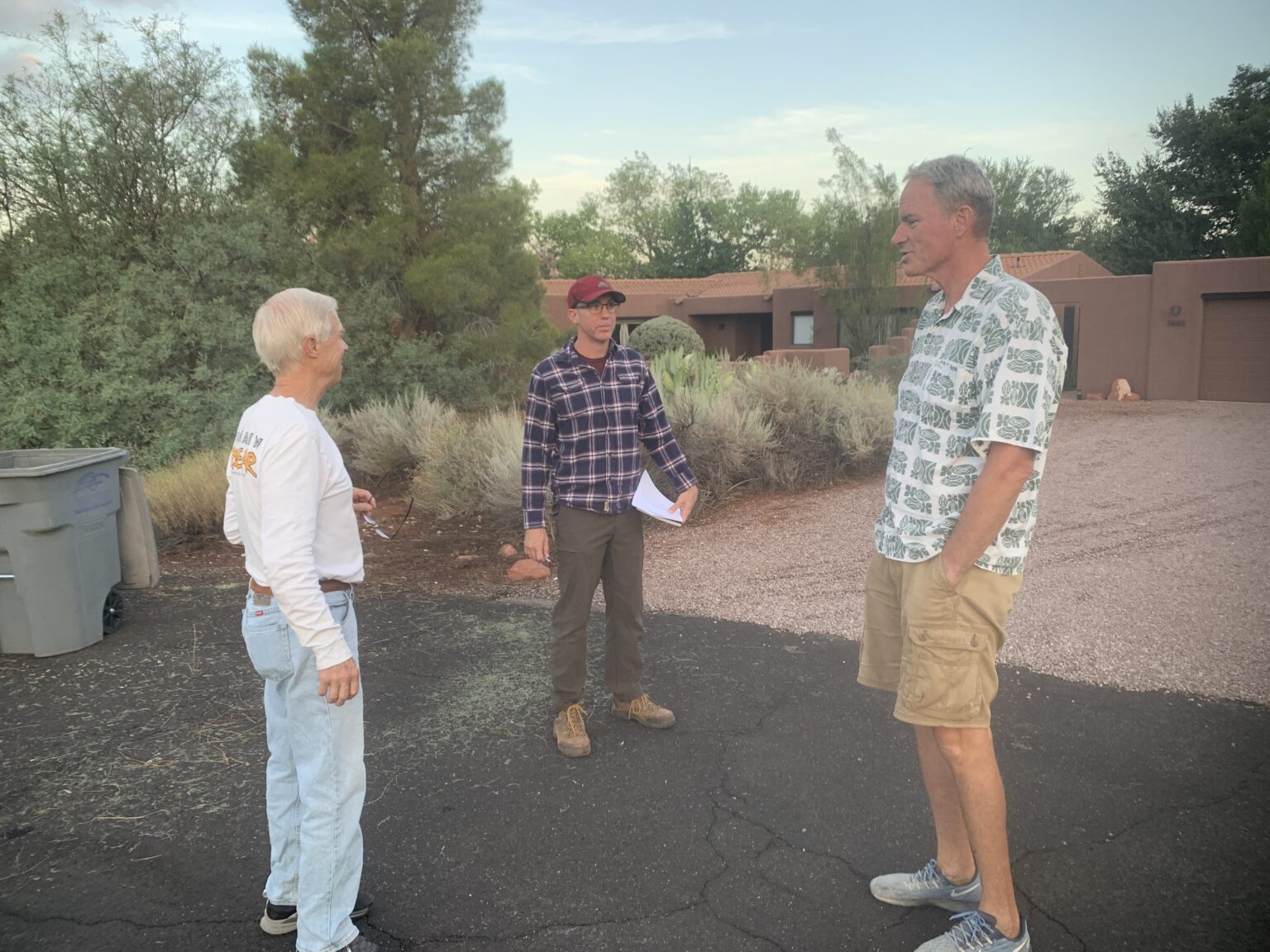
Listening, Teaching, Tracking
February 2025
Success doesn’t just happen. It takes planning, organization and follow-up. For the Desert Preservation Initiative, creating a project phase system provides the structure and check points needed for success.
Tamarisk removal is not simple or easy because it involves living organisms. Cutting and removing tamarisk is just the first, most visible step. Monitoring projects for regrowth over time is critical to insuring that the work has not been in vain. Anticipating and planning for restoration is an ongoing process that requires intimate knowledge of native plants and a clear assessment of what might work best in each location.
To manage these tasks and facilitate teamwork, DPI has created a five-phase project management system: initiation, removal, monitoring, restoration and archiving.
During initiation, phase coordinator Aaron Martin is challenged to connect with homeowners who lead busy lives, listening to their concerns and explaining DPI’s sound research and hard-won field experience, showing them clear results from recently completed projects. He works with homeowners to explain how “we’re mindful to minimize disruption of the existing landscape as we work to remove targeted plant material.” Need and results, care and cooperation—those are key messages he delivers in person at each site.
For Chuck Warren, coordinator of the removal phase, educating everyone involved is central to success.
Removal involves monitoring safety and maintaining the mechanical equipment needed to do the work. Constant communication and training of a changing roster of volunteers is critical. “Making a physically hard task as enjoyable as possible and letting others know they are appreciated is important,” Warren says.
Additional tasks in the removal phase include determining the best method of disposal of debris for a given site, working with what homeowners want in this regard, taking the shape of the terrain into account for cutting and removal/disposal, and educating the community as to the priority given to the work near homes where fire danger is greatest because of the presence of tamarisk.
Once tamarisk is removed, monitoring over the next 12 to 24 months begins. Every three months, the monitoring team checks for regrowths on the cut stumps, but they are challenged by the weather, according to coordinator Carole Richard. White flags left to mark stumps are often blown away or covered by sand. “Depending on the season we can see very little regrowth, if any, in a given quarter and next quarter there is a huge regrowth because it rained, or the temperatures warmed up. We try really hard to catch the regrowth as early as possible,” she says. “Teamwork is the most important factor in monitoring,” Richards explains, “because we also need more than one set of eyes to look at any given stump as the regrowth can be quite tiny. “
Following two consecutive site visits with no regrowths, the restoration team works to evaluate the best option to see the site ultimately blend with the surrounding environment. Can the site restore itself from existing seed and plant sources or will additional support, such as replanting, be needed to expedite the health and appearance of the site? The chief challenge, according to team member Becky Warren, has been ”identifying appropriate native plants to use and finding a source for purchasing those plants,” working with homeowners and the ACC’s landscape committee.
Finally, each project moves in the archival phase, where volunteers compile and archive documents and photographs from each phase to record progress, methods and improve success.
Looking ahead, “since tamarisk has quite a head start and we are a part-time, volunteer effort, our opportunities for removal currently outstrip our volunteer capacity—simply, we need more volunteers to do what’s needed,” says Aaron Martin.
Though the ultimate goal of removing tamarisk is huge, so is the commitment of the DPI volunteers. Employing clear communication across its teams, listening, teaching and tracking.
